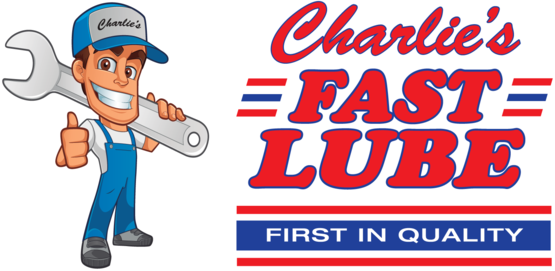The Charlie's Fast Lube Sikeston Guide to Tire Specs
April 2, 2023
You know you need new tires, but you're not sure what type. You look at a tire to get the size: 225, 50, R, 16, 92, H. All the way to the Sikeston service center you keep repeating it over and over. You even say it over in your mind while waiting in line. Then you get to the counter and the manager asks what size you need. Then your mind goes blank.
Tire size can be confusing for many Sikeston drivers. There's so much on the side of the tire, and it's hard to keep straight.
Even though there's a lot on a tire - if you know what it all means, it's actually more helpful than confusing for Sikeston tire shoppers. Let's start with the size number.
For example, let's say a tire reads: 225 50 R 16 92 H. The 225 part is the width of the tire in millimeters - the width between the sidewalls of an inflated tire with no load. The 50 is the aspect ratio - the ratio of the sidewall height to the tread width. Off-road tires will have a higher number and high performance tires will have a lower number.
The R signifies it's a radial tire. And 16 is the rim or wheel size in inches.
The 92 is the load rating index - it's the load carrying capacity of a tire. The higher the number, the more it can safely carry. Your empty vehicle can be safe with a lower number, but you'll need a higher rating if you routinely haul heavy loads around Sikeston. The next letter is the speed rating. Not all tires sold in Sikeston are speed rated. The ratings generally follow the alphabet: the further up the alphabet, the higher the speed rating - with the exception of H - it comes between U and V (don't ask why).
There's a lot of fine print that most Sikeston area drivers probably need a magnifying glass to read. But there are a couple of other large print items of interest. One is the tread type: highway, mud and snow, all season, severe snow, etc.
And then there are the Uniform Tire Quality Grading System markings. The first is a tread wear index. 100 is the base line - a lower number is poorer and a higher number is better. All things being equal, a tire rated 200 would wear twice as long, on a government test track, than one rated at 100. These wear grades are only valid within the manufacturers product line - you can't compare with others. And it's important to note that a lower rating might be just what you want - a high performance, sticky tire has a softer rubber compound and won't wear as long, but boy, will it take those corners on twisting Missouri roads.
The next is a traction grade. This measures the tire's ability to stop on wet pavement in government tests. A - the best, B - intermediate, C - acceptable.
Temperature grade measures a tire's resistance to heat buildup in government tests. A, B and C - from best to acceptable.
It's safe for Sikeston drivers to go with the vehicle manufacturers original equipment recommendations that came on your car. But if you want to make adjustments, you'll now be better equipped to communicate with your friendly and knowledgeable Charlie's Fast Lube Sikeston tire professional.
Charlie's Fast Lube Sikeston
2017 E. Malone
Sikeston, Missouri 63801
573-472-1139
http://www.charliesfastlubesikeston.com
Need Service?
More articles from Charlie's Fast Lube Sikeston

A Bright Spark (Ignition Coil Replacement)
December 14, 2025
Ever wonder how your vehicles engine is able to take the 12-volts from its battery and ramp that up to as high as the tens of thousands of volts it takes to fire its spark plugs? The secret is something called an ignition coil. Most newer vehicles have an ignition coil at each cylinder, but olde... More

Not Too Hot and Not Too Cold (Temperature Gauge)
December 7, 2025
You know your body temperature is supposed to be 98.6 degrees F, 37 degrees C. Your vehicle has a normal temperature, too, and if you pay attention to it, that can save you some big headaches down the road. Many vehicles have a temperature gauge on the dash that takes the temperature of the engi... More

QUIET TIME (Listening for Vehicle Problems)
November 30, 2025
Everybody's got friends like this. You know, the kind who, the minute they get in their vehicle and turn the key, the sound system is deafening. They just love to hear that music, sports, news anything but the sound of the vehicle itself. And maybe you're that person, too. Here's something to ... More










